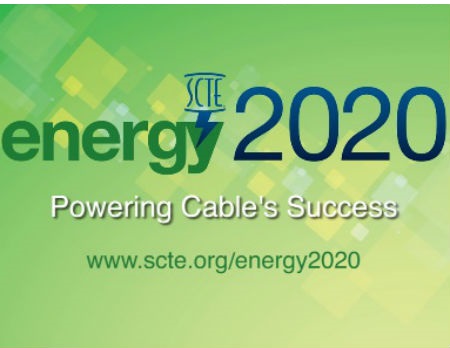SCTE Plugs Standards Into ‘Energy 2020’ Program

The Society of Cable Telecommunications Engineers (SCTE) said its “Energy 2020” program took a step forward with an initial batch of standards that focus on baseline and benchmark metrics that will help operators vastly cut down their energy output in the coming years.
Introduced last June and outlined at last year’s SCTE Cable-Tec Expo in Denver, Energy 2020’s targets include a 20% reduction of power consumption a unit basis, a 25% reduction in energy costs on a unit basis, a 10% reduction of grid dependency and an optimization of technical facility and data center footprints by 20%.
As a push toward those goals, SCTE said the program’s Energy Metrics, Data Collection & Reporting Working Group has published four standards that cover the “rack to the system level”:
-SCTE 210 2015 -- Performance Metrics for Energy Efficiency & Functional Density of Cable Data Generation, Storage, Routing, and Transport Equipment;
-SCTE 211 2015 -- Energy Metrics for Cable Operator Access Networks;
-SCTE 212 2015 -- Cable Operator Energy Audit Framework and Establishment of Energy Baseline; and
-SCTE 213 2015 – Edge and Core Facilities Energy Metrics.
Multichannel Newsletter
The smarter way to stay on top of the multichannel video marketplace. Sign up below.
Those standards follow SCTE 186 2012 (Product Environmental Requirements for Cable Telecommunications Facilities), developed and published prior to the Energy 2020 initiative that focused but wasn’t limited to cable modem termination systems, receivers, modulators, video encoders, multimedia gateways, servers, routers, and edge QAMs.
The 186 standard is considered a “stepping stone” to the new standards being announced today, Dan Cooper, vice president, critical infrastructure for Time Warner Cable and chair of the SCTE Standards Energy Management Subcommittee, said.
While more standards tied to the program are in development, establishing accepted, unified metrics that underpin the program are “key out of the gate” as MSOs look to measure and track that information on a consistent basis, Cooper explained.
He said establishing these standards were among the group’s top priorities, noting that they’ve been in development for about six months. The next steps are to get them engrained into the process as MSOS work with vendors (who are being encouraged to follow the standards,) implement upgrades and act on other buying decisions that place a greater emphasis on power consumption.
In addition to helping cable become more “green,” the program is also good for business. “Power is a cost,” Cooper said. “The more efficient we can be, the better our bottom line will be.”
He said the project is on track, but acknowledges that “it’s a pretty big undertaking.”
Energy 2020 is co-chaired by John Schanz, EVP and chief network officer of Comcast Cable; and Balan Nair, the EVP and CTO of Liberty Global. Of recent note, Dave Fellows, formerly with Comcast, AT&T Broadband and Scientific-Atlanta, and now CTO and co-founder of Layer3 TV, was named chief scientist of the initiative.
